Vincent Callebaut proposes underwater "oceanscrapers" made from 3D-printed rubbish
Belgian architect Vincent Callebaut has developed plans for a city of futuristic ocean buildings made from 3D-printed plastic waste which extend 1,000 metres below the water's surface (+ slideshow).
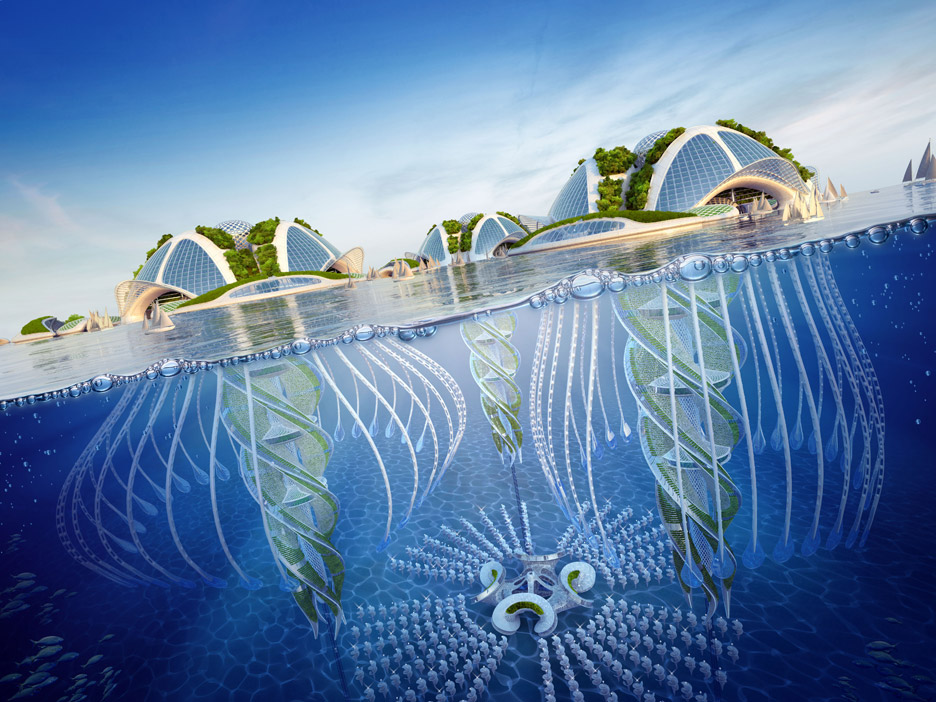
Described by Callebaut as "an oceanscraper printed in 3D from the seventh continent's garbage," Aequorea is a fictional water city off the coast of Rio de Janeiro. It draws its name from a type of bioluminescent jellyfish called aequorea victoria.
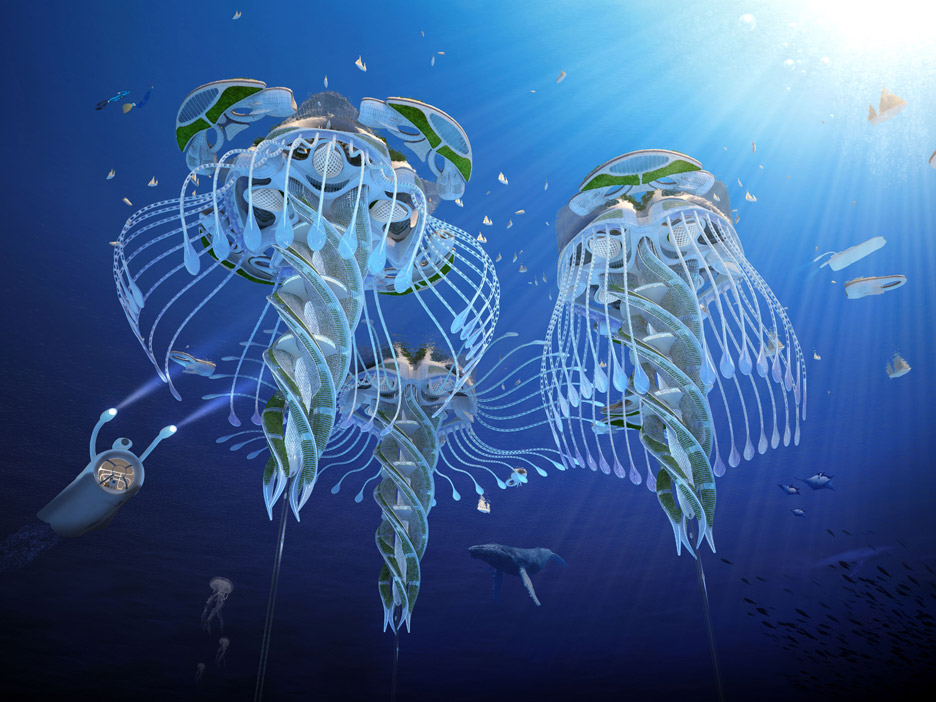
The concept is intended to highlight the dwindling natural resources on land and the need to clean up the "disgusting soup of petroleum-based waste" created by dumping plastic in the ocean.
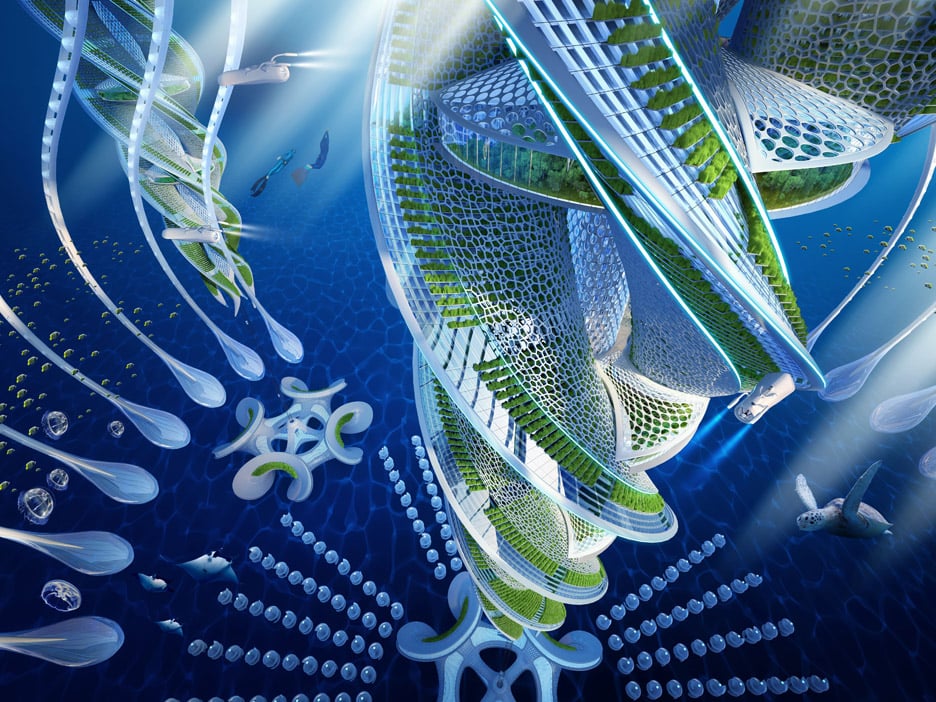
It is the latest in a series of conceptual projects by the architect, including a transport system powered by seaweed and plant-covered "farmscrapers".
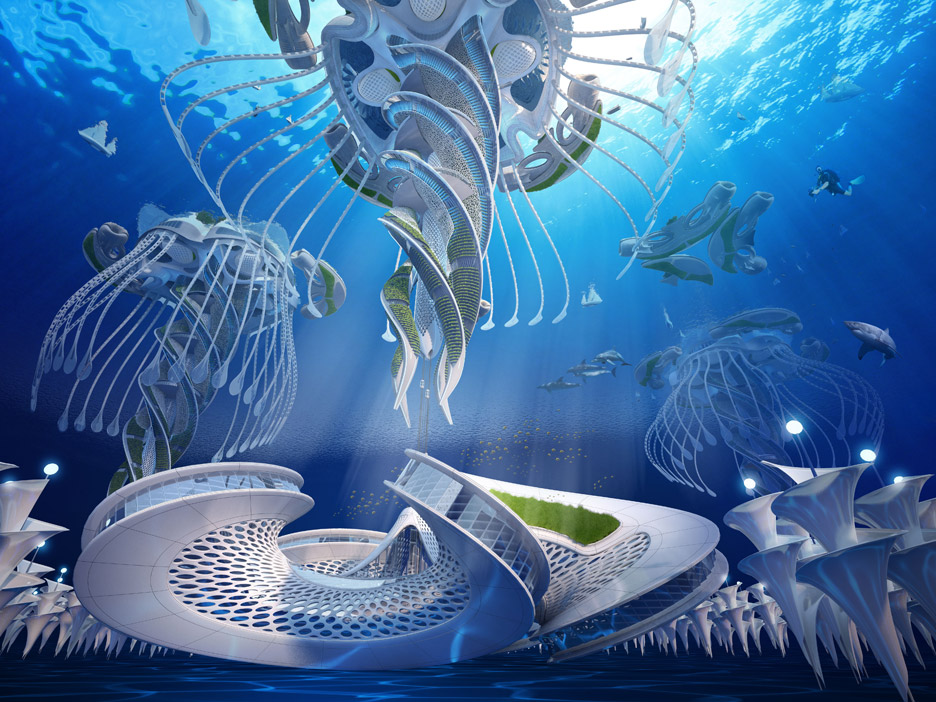
Callebaut presents the idea in the form of a letter addressed to the "people of the land", which accuses the present population of carelessly "mortgaging the fate of future generations". It is penned by a fictional teenage "aquanaut" named Oceane based Aequorea and dated 24 December 2065.
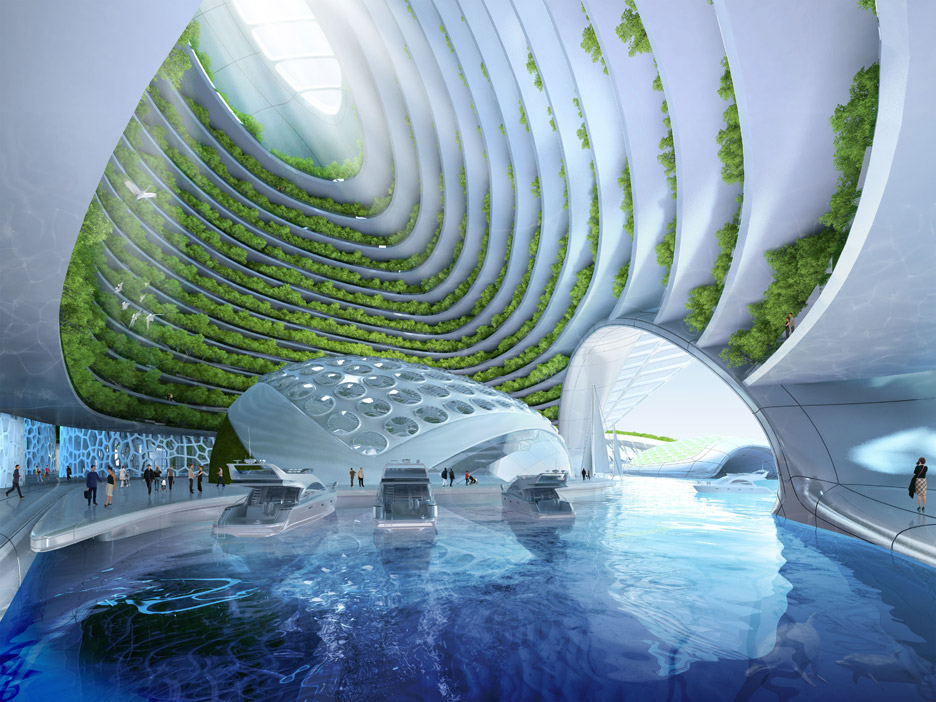
"When my grandfather tells me about his terrestrial way of life of the time, it seems totally preposterous today," it reads. "They were consuming the city like a commodity rather than a common good that should be nurtured in symbiosis with nature."
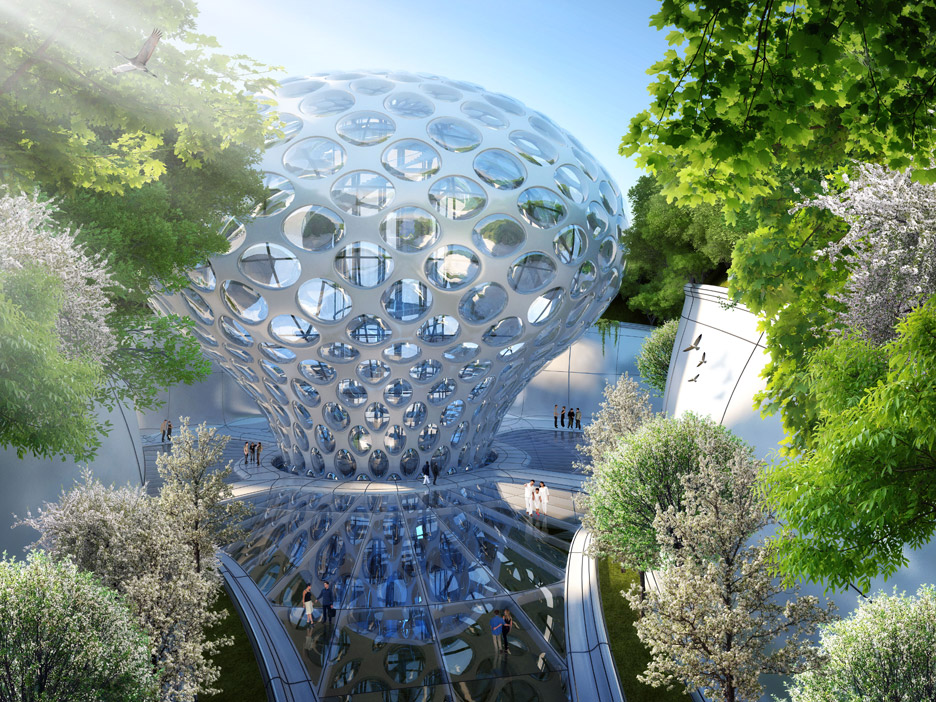
A series of domed marines measuring 500 metres in diameter would provide access to the underwater environment.
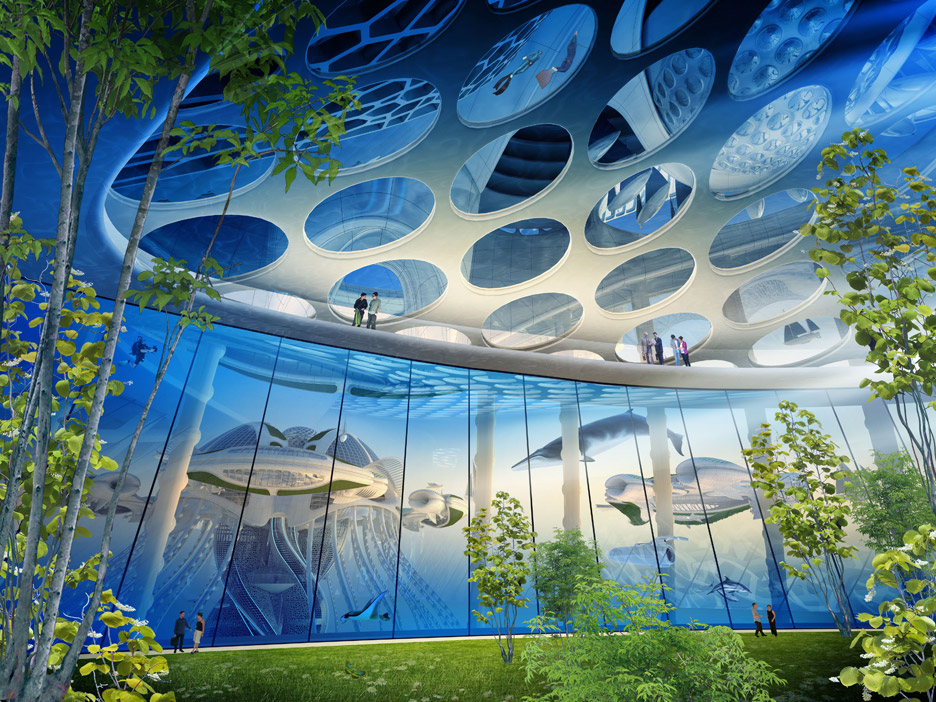
The architecture would be made from algoplast, an invented composite material made from algae and rubbish. This repurposed material would be 3D printed to create the 1,000 towers, designed to accommodate 20,000 aquanauts.
Instead of fossil fuels, citizens would sustain their aquatic life with new renewable energy sources, and would use gill masks to breath underwater, according to Callebaut.
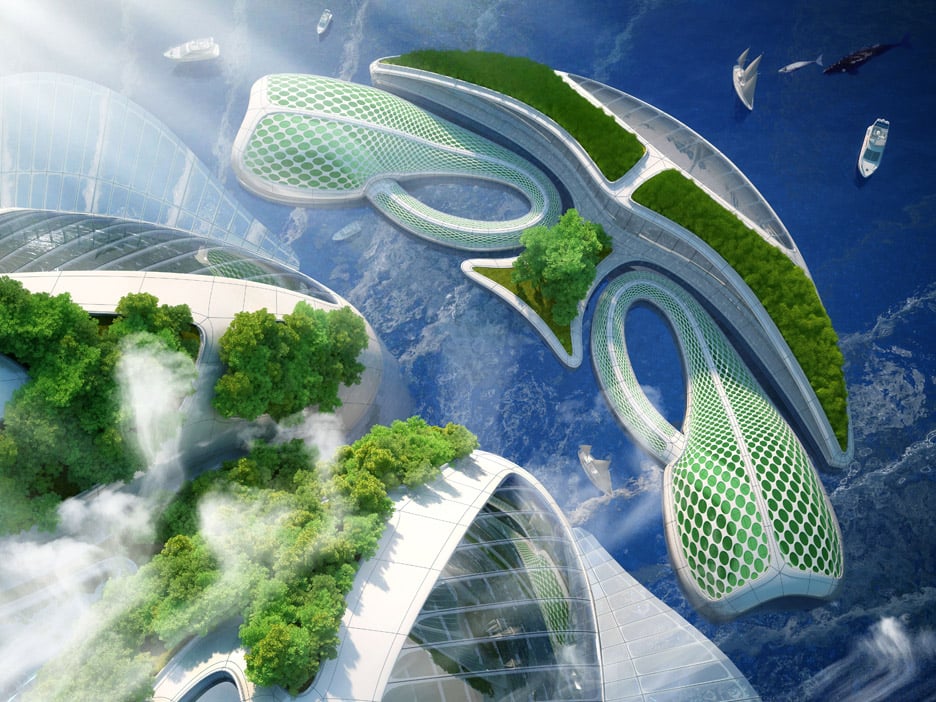
Food would come in the form of farmed algae, plankton and mollusks, while orchards and vegetable gardens would be grown on top of the conch-like structures.
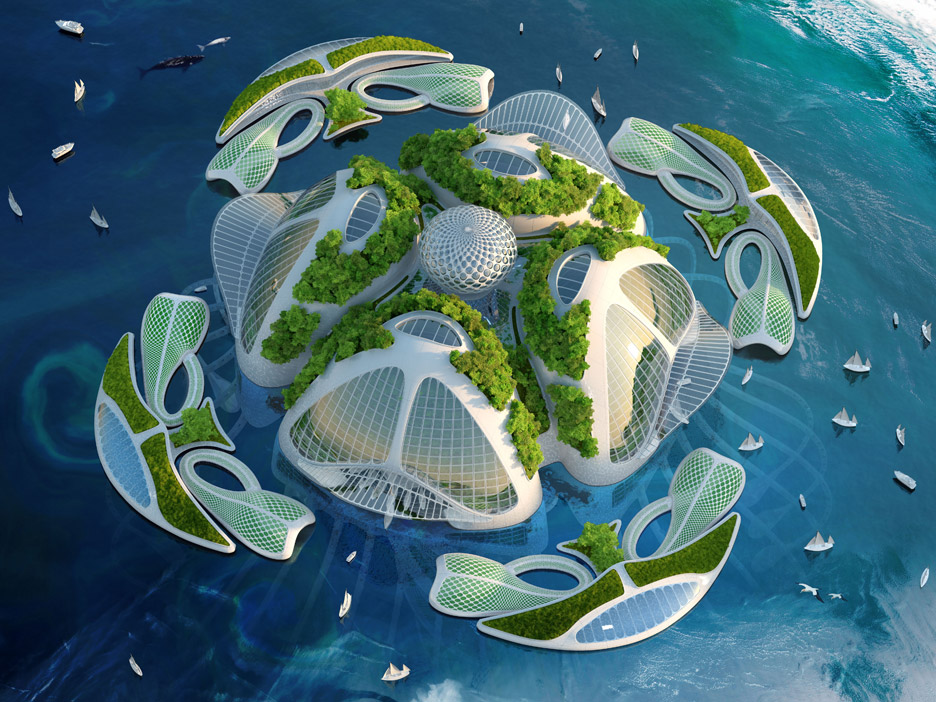
The Aequo currency would support the marine economy. And studies in sea-dwelling animals would result in treatments for cancer, AIDs and heart disease.
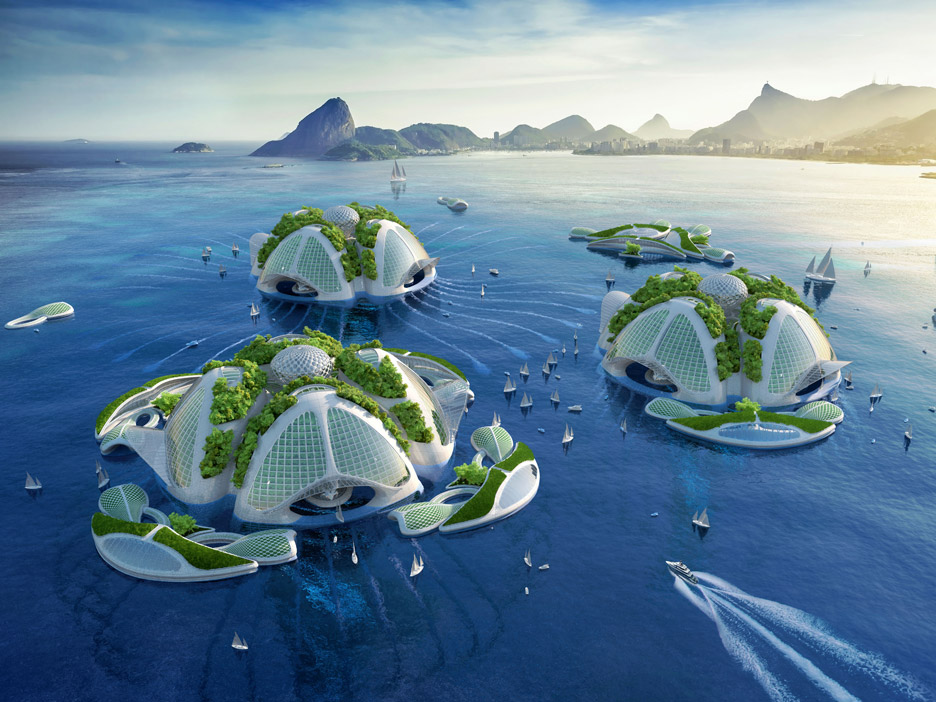
The letter closes with the ominous warning: "Never forget this: oceans produce 50 per cent of our planet's oxygen. They are the most active lung! Well worth the trouble of cleaning to re-enchant our living together, don't you think?"
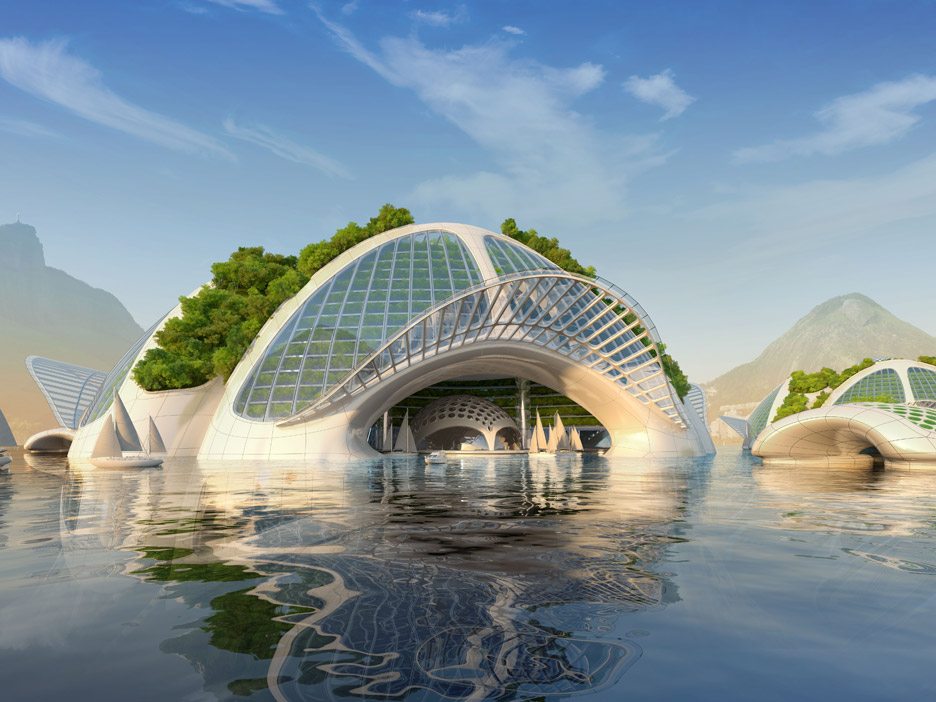
Callebaut isn't the only architect imagining an underwater future. Other projects in development include an underwater hotel for Dubai and a proposal for underwater cities accessed by giant spirals.